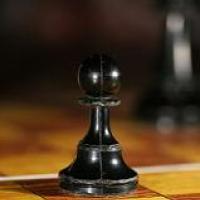
An isolated pawn d4 (d5): Three practical examples
The most of you know, I suppose, what an isolated pawn is. For beginers, I take a definition from jeremysilman.com Glossary of Chess Terms:
A pawn with no friendly pawns on either adjacent file. (...) The negatives of an isolated pawn are its inability to be guarded by a friendly pawn and the fact that the square directly in front of it usually makes a fine home for an enemy piece since no pawns can chase it away. On the positive side, it offers plenty of space and the use of two half open files (on either side of it), with the result that one’s pieces usually become active.
We can add that positive side is common in the midlegame, and negative in the endgame, wneh there are not so many pieces which can be active. It's gave as strategic principles for play when you or your oponent have an isolated pawn. If you play agaist an isolated pawn, you need to try to ocupy the squere directly in front of it, to parialse his/her active pieces (and/or realise contra-activity), and to change pieces to transform the game into an endgame.
Isolated pawns can appear in various openings and variations. Probably the most frequent case is a white isolated pawn at the square d4, or black at d5. I submit here three examples from my games. I was black in all of them. I the first two, my oponent had an isolated pawn and I won both games in the endgame. At the third, I had an isolated pawn d5, and I lost.




